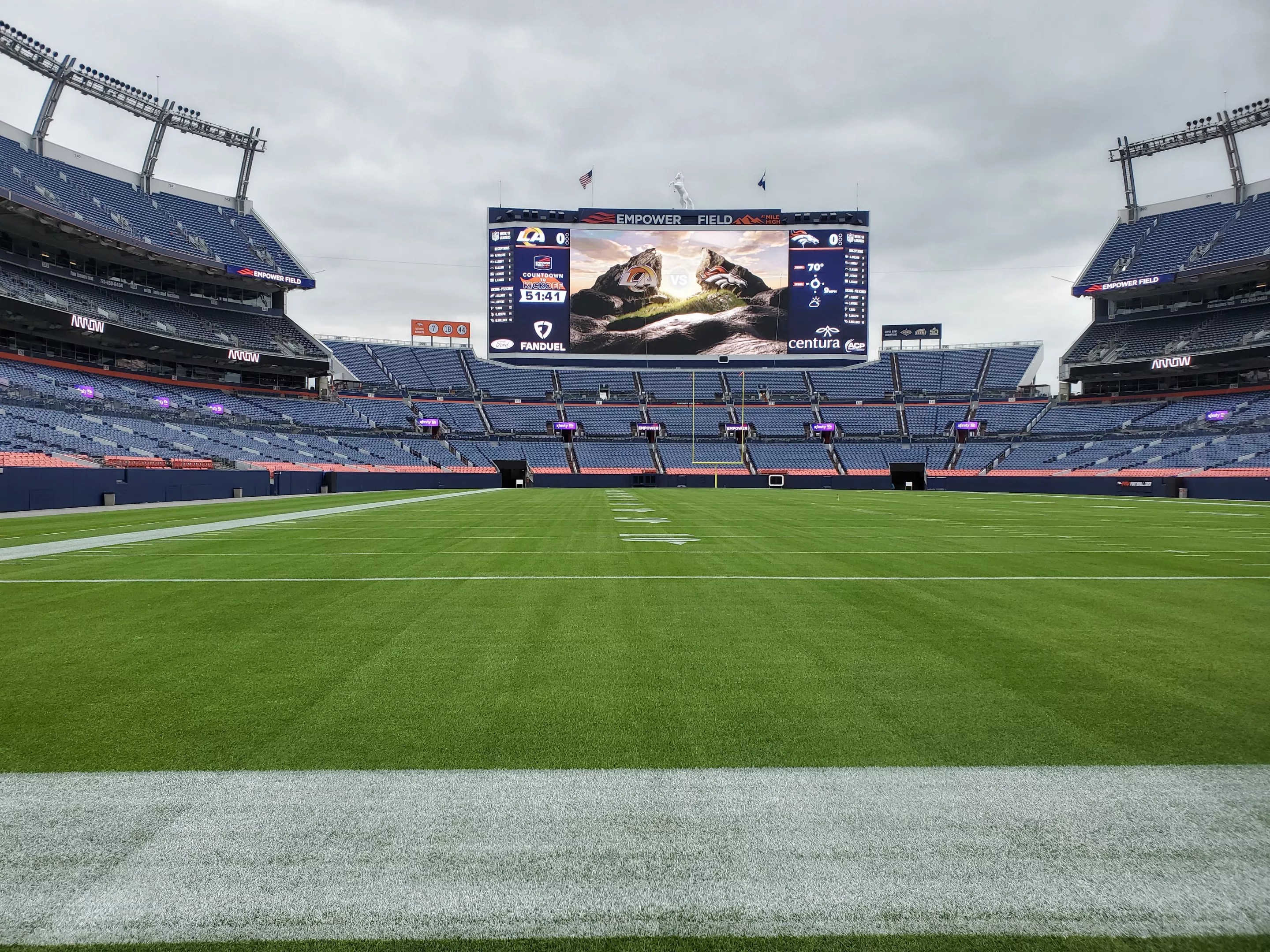
Molly Martin

Audio By Carbonatix
Let me say it loud and clear. If the Denver Broncos ownership builds the team’s new stadium outside the Mile High City, the majority of Broncos Country is going to loudly boo and scream “Incomplete!”
As businesspeople, I don’t fault the Walter-Penner ownership speaking with officials in Douglas County, Lone Tree and even Aurora. Yet, they also know they have a perfect location already taking root just a few miles south of the current stadium.
The team quietly spent about $150 million since last year buying more than a dozen parcels of land near Burnham Yard. The state-owned, 58-acre former railyard is in the La Alma Lincoln Park neighborhood. Many older buildings have dotted the property near the Denver Water headquarters for decades.
This is the perfect location for a new stadium. Team ownership doesn’t need to drag this out, like the Cleveland Browns have mishandled the quarterback “competition” with Shedeur Sanders.
Denver, make your New Year’s Resolution Count!
We’re $12,000 away from reaching our $50,000 year-end fundraising goal. Your support could be what pushes us over the top. If our work has kept you informed and connected this year, please consider making a contribution today.
This will be a public relations disaster if ownership seriously considers moving the Denver Broncos outside the city. All the good faith the team has built in the last few years, from hiring head Coach Sean Payton to drafting quarterback Bo Nix and signing competitive free agents, could disappear with this one major decision.
It really is that important.
When I served as Denver’s mayor from 1991 to 2003, I had the privilege of helping to oversee the construction of Coors Field, the Pepsi Center (now Ball Arena) and the new Mile High Stadium.
It was my belief then and now that these three professional sports venues must be located downtown. The venues are centrally located, which is convenient for fans and keeps downtown vibrant.
We don’t have to be like other cities that cause fans to drive miles to a football entertainment center. Keeping the fans who also patronize area restaurants and bars downtown provides more economic stability.
Just envision the traffic nightmares of navigating I-25 during a snowstorm, or battling motorists headed to Aurora. Fans are accustomed to descending on the current stadium’s location, which will help in the transition. I also would hope that RTD studies even more ways to transport fans to the area.
As mayor, when negotiating with the then-Denver Nuggets and Colorado Avalanche owners for the Pepsi Center, which replaced the nearby McNichols Arena, I insisted the contract include a 25-year agreement to remain downtown.
I also insisted on the same 25-year agreement with the Metropolitan Football Stadium District to keep the Broncos stadium in its historic location.
What some people may not know is that the taxpayers own the property at the current stadium – not the Broncos. I assume the team and district are in talks about how that property could be developed once the new stadium is built. That land gives the Broncos ownership more options about developing an entertainment and housing area that is within a short distance of the Burnham Yard site.
So, I urge ownership to make a decision sooner than later. We don’t need this to be prolonged. This already is overtime for Broncos Country, and we need ownership to score a touchdown immediately.
Keep the new stadium in Denver, and while you’re at it, restore the original Mile High Stadium name. It’s the only path to victory.
On weekends, westword.com publishes commentaries on matters of interest to the Denver community; the opinions are those of the authors, not Westword. Have a piece you’d like to share? Email editorial@westword.com, where you can also comment on this essay.